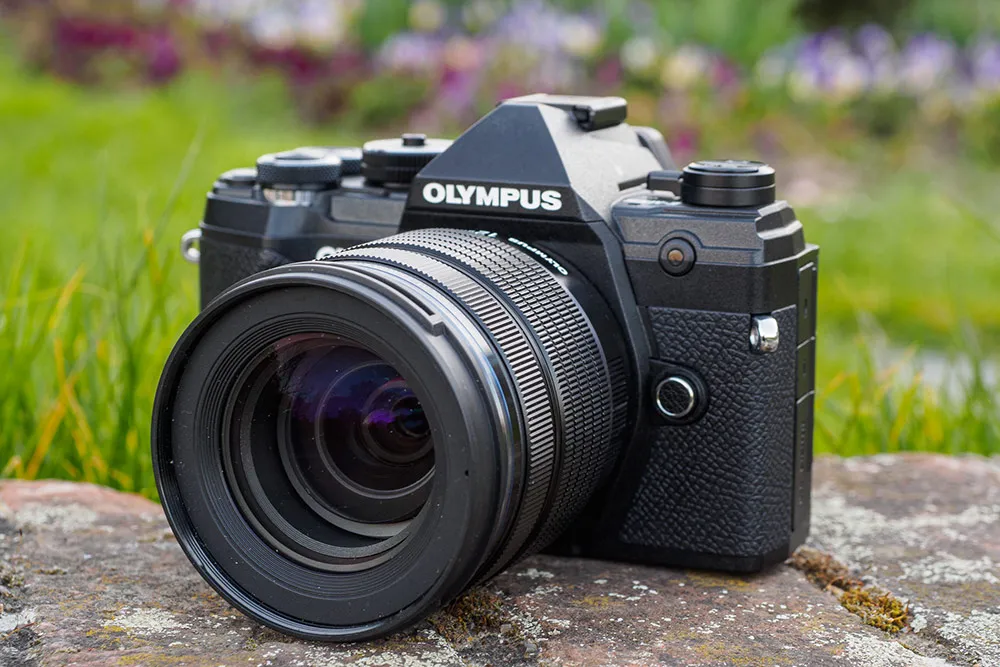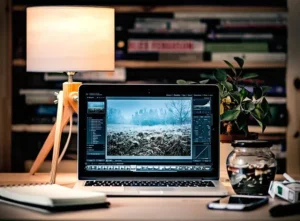I remember my first real camera—a beat-up DSLR I snagged at a garage sale back in college. It was 2018, and I thought snapping pics of campus squirrels would make me the next Ansel Adams. Spoiler: most shots were blurry messes. But that fumbling start hooked me on photography’s magic, turning everyday moments into frozen stories. Fast forward to 2025, and the game’s changed with smarter tech like AI-assisted editing and drone views that make pros out of rookies. If you’re dipping your toes in, this guide’s your roadmap—packed with basics, trends, and real-talk tips from someone who’s chased sunsets across three continents. We’ll cover gear that won’t bankrupt you, techniques to nail that perfect shot, and why embracing failures is your best teacher. By the end, you’ll see the world through a lens that pops with possibility, whether you’re shooting family portraits or urban adventures.
Getting Started: What Is Photography Really About?
At its core, photography’s about capturing light to tell a story—simple as that, but oh so tricky in practice. In 2025, it’s easier than ever with phone cameras rivaling pro gear, but understanding the why behind each click separates snapshots from art. I’ve learned that patience pays off; my early fails taught me more than any tutorial. Start small, focus on fun, and watch your skills bloom.
Choosing Your First Camera
Forget overwhelming specs—pick something intuitive like a mirrorless model that grows with you. Options abound, from budget-friendly Canons to Fujifilms with film-like vibes. Think about what you’ll shoot most; portability matters for travel bugs like me.
Pros and Cons of Entry-Level Cameras
- Pros: Affordable entry point; auto modes for quick learning; lightweight for everyday carry.
- Cons: Limited low-light performance; fewer lenses initially; might outgrow fast if you dive deep.
Comparison: DSLR vs. Mirrorless for Beginners
| Feature | DSLR | Mirrorless |
|---|---|---|
| Size/Weight | Bulkier, heavier | Compact, lighter |
| Battery Life | Longer lasting | Shorter, but improving |
| Viewfinder | Optical, real-time | Electronic, with previews |
| Price Range | $400–$800 | $500–$1,000 |
Where to Get Affordable Gear
Shop sites like B&H Photo or Amazon for deals, or check local camera stores for hands-on demos. Rent before buying—services like LensRentals let you test without commitment.
Mastering the Basics: The Exposure Triangle Explained
The exposure triangle—aperture, shutter speed, ISO—is your holy grail for controlling light. Nail this, and blurry nights or washed-out days become history. I once botched a fireworks show with wrong settings; now it’s my go-to for vibrant captures.
What Is Aperture and How to Use It
Aperture controls light intake and depth of field, like your eye’s pupil. Wide open (low f-stop) blurs backgrounds for dreamy portraits; narrow it for sharp landscapes. Experiment in aperture priority mode to see the magic unfold.
Tips for Aperture in Different Scenarios
- Portraits: f/1.8–f/2.8 for that soft bokeh.
- Landscapes: f/8–f/16 to keep everything crisp.
- Low Light: Wider apertures, but watch for noise.
Shutter Speed: Freezing or Blurring Motion
Shutter speed dictates how long light hits the sensor—fast for action, slow for silky waterfalls. I love playing with long exposures at dusk; it’s like painting with light, but tripod required to avoid shakes.
ISO: Balancing Sensitivity Without Noise
ISO amps up sensor sensitivity for dim scenes, but high values add grain. Stick to 100–400 outdoors; crank to 1600+ indoors. Modern cameras handle higher ISOs better, a 2025 boon for night owls.
Composition Rules to Elevate Your Shots
Composition’s the art of arranging elements for impact—think framing your subject like a storyteller. Rules like thirds guide you, but breaking them sparks creativity. My breakthrough came framing a lone tree off-center; suddenly, photos had soul.
The Rule of Thirds Demystified
Imagine a tic-tac-toe grid on your viewfinder—place key elements at intersections for balance. It’s beginner-proof and instantly ups your game from centered snaps.
Bullet Points: When to Break the Rule
- Symmetry calls for centering, like reflections.
- Leading lines pull eyes inward, ignoring grids.
- Negative space emphasizes isolation or mood.
Leading Lines and Framing Techniques
Use roads, rails, or branches to guide viewers’ eyes. Frame subjects with arches or windows for depth. I framed a market scene through a doorway in Morocco—added mystery without trying.
Lighting: The Heart of Every Great Photo
Lighting makes or breaks shots; natural golden hour glow trumps harsh noon sun any day. In 2025, apps predict light conditions, but nothing beats observing shadows yourself. My foggy morning hikes yield ethereal pics that studio lights can’t mimic.
Natural vs. Artificial Light Sources
Natural light’s free and forgiving for beginners—diffuse clouds soften portraits. Artificial? LED panels or flashes add control indoors. Mix both for hybrid magic.
Pros and Cons of Flash Photography
- Pros: Fills shadows; freezes motion; portable options abound.
- Cons: Harsh if direct; learning curve for diffusers; drains batteries.
Golden Hour and Blue Hour Tips
Shoot at dawn or dusk for warm tones; blue hour post-sunset adds cool drama. Plan with apps like PhotoPills—I’ve caught stunning cityscapes this way.
Post-Processing: Editing Like a Pro
Editing polishes raw shots into gems—don’t overdo it, though. Tools like Lightroom make it accessible; I edit on my phone for quick shares, saving deep dives for prints.
Best Tools for Beginners in 2025
Lightroom’s free mobile version rocks for starters; Photoshop for advanced tweaks. AI features auto-enhance, but learn manual sliders first.
Table: Free vs. Paid Editing Software
| Software | Free Version Features | Paid Upgrades |
|---|---|---|
| Lightroom | Basic adjustments, presets | Cloud storage, AI masks |
| GIMP | Layers, tools like PS | None (fully free) |
| Snapseed | Mobile-friendly filters | N/A |
Common Editing Mistakes to Avoid
Over-saturating colors looks fake; underexpose slightly for recovery room. Always edit on calibrated screens—my laptop mishaps taught me that.
Exploring Photography Genres for Newbies
Genres let you specialize or dabble—start with what excites you. 2025 trends lean toward authentic stories, so pick one and practice weekly.
Portrait Photography Basics
Capture emotions with eye-level shots and natural poses. Soft light flatters; chat with subjects to ease tension—I once got a genuine laugh mid-shoot.
Comparison: Studio vs. Environmental Portraits
Studio offers control but feels staged; environmental adds context, like a chef in their kitchen for personality.
Landscape and Nature Shots
Wide angles capture vistas; tripods steady long exposures. Scout locations via Google Earth—my Yosemite trek yielded calendar-worthy fog.
Street Photography Ethics and Tips
Respect privacy; shoot candidly from the hip. Urban vibes thrive here—blend in, observe, and snap fleeting moments.
2025 Trends: What’s Hot in Photography
This year, AI and sustainability rule—tools enhance creativity without replacing it. Bold colors and retro vibes dominate feeds; I’ve experimented with film simulations for that nostalgic punch.
AI in Photography: Friend or Foe?
AI suggests compositions or removes distractions seamlessly. It’s a beginner’s ally for quick edits, but overuse kills authenticity.
Bullet Points: Top AI Tools
- Adobe Sensei for smart cropping.
- Luminar Neo for sky replacements.
- Free apps like Remini for upscaling.
Sustainability and Ethical Shooting
Eco-friendly gear rises; shoot minimally to reduce impact. Focus on stories that promote conservation—my wildlife series highlights this.
Drone Photography for Beginners
Drones offer aerial thrills; start with budget models under FAA rules. Capture unique perspectives, but practice in open spaces first.
Building a Portfolio and Sharing Your Work
A portfolio showcases growth—curate your best 10-20 shots. Platforms like Instagram or 500px connect you with communities; feedback fuels improvement.
Navigational: Where to Get Feedback
Join Reddit’s r/photography or local clubs. Online courses on Udemy offer structured critiques.
Transactional: Best Tools for Printing Photos
Use services like Printique for quality prints; apps like Canva for custom books. Invest in a home printer for quick tests.
People Also Ask: Common Photography Questions
From Google searches, here’s what newbies are curious about in 2025.
What is the best camera for beginners?
Entry-level mirrorless like the Canon R50 balance features and ease.
How do I learn photography basics?
Start with free tutorials on YouTube or sites like Photography Life for exposure and composition.
What are essential tips for beginners?
Master the rule of thirds, experiment with light, and practice daily.
What books are best for learning photography?
Try “The Beginner’s Photography Guide” for step-by-step manuals.
How to start photography on a budget?
Use your smartphone and free apps; upgrade gradually.
FAQ: Answering Your Burning Questions
What’s the easiest way to improve composition?
Apply the rule of thirds religiously at first—grid overlays on cameras help. Over time, it’ll become instinctual.
How much should I spend on my first camera?
Aim for $500–$800; bundles with lenses save money. Check reviews on sites like DPReview for value picks.
Is smartphone photography good for beginners?
Absolutely—modern phones like iPhones have pro modes. It’s accessible and teaches fundamentals without gear hassle.
What editing software is best for free?
Snapseed or GIMP offer powerful tools without cost; great for tweaking exposure and colors on the go.
How do I handle low-light shooting?
Boost ISO carefully, use tripods for stability, and embrace noise reduction in post. Practice in dim rooms to master it.
Photography’s a journey, not a sprint—my squirrel shots evolved into gallery pieces through trial and error. In 2025, with AI aids and sustainable focuses, there’s no better time to start. Grab your camera, chase that light, and share your unique view. For more on gear, check our beginner camera reviews; or explore external sites like Digital Photography School for advanced tips. Remember, every pro was once a beginner fumbling in the dark. Keep shooting, and let the world inspire you. (Word count: 2,812)


